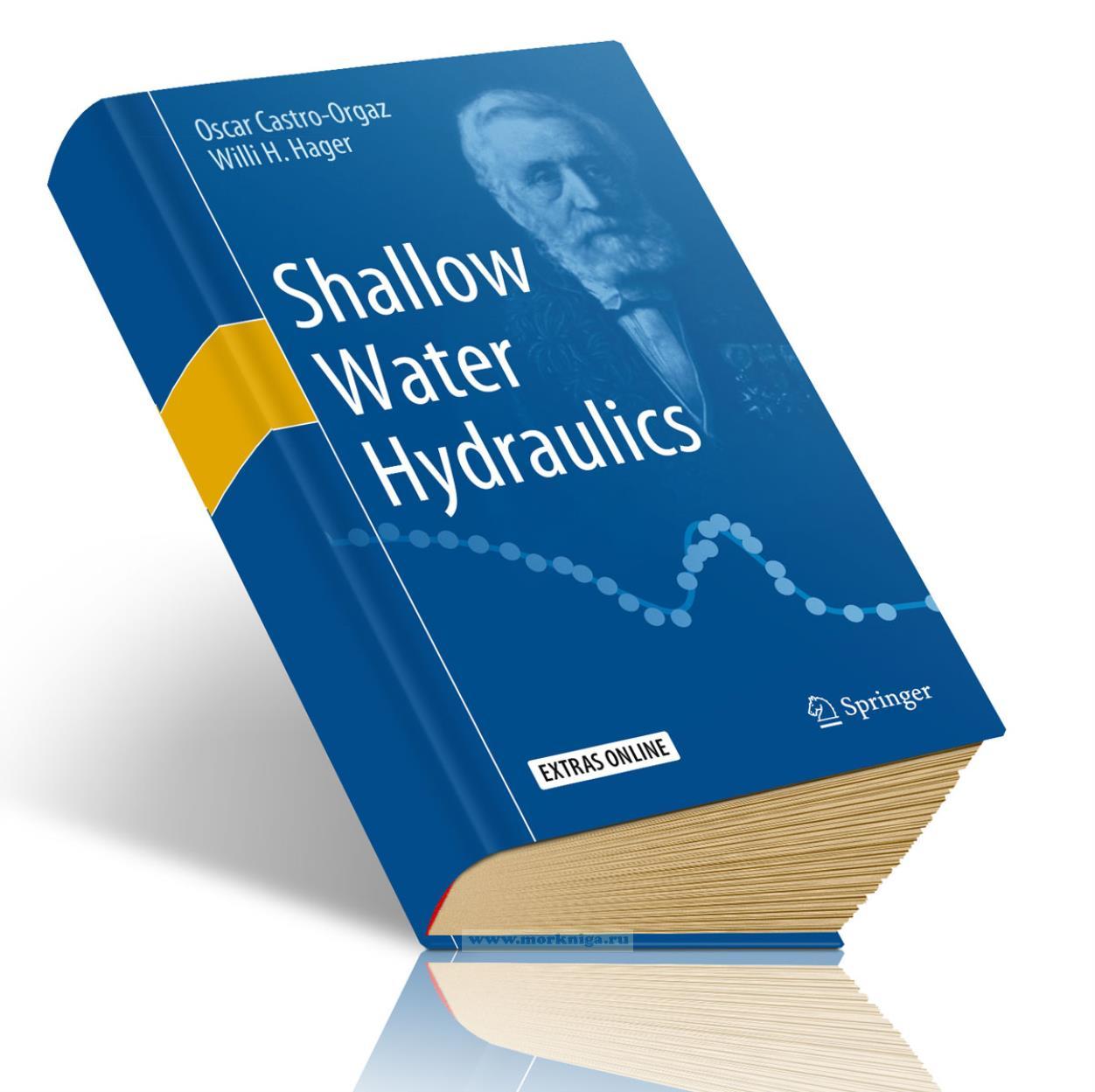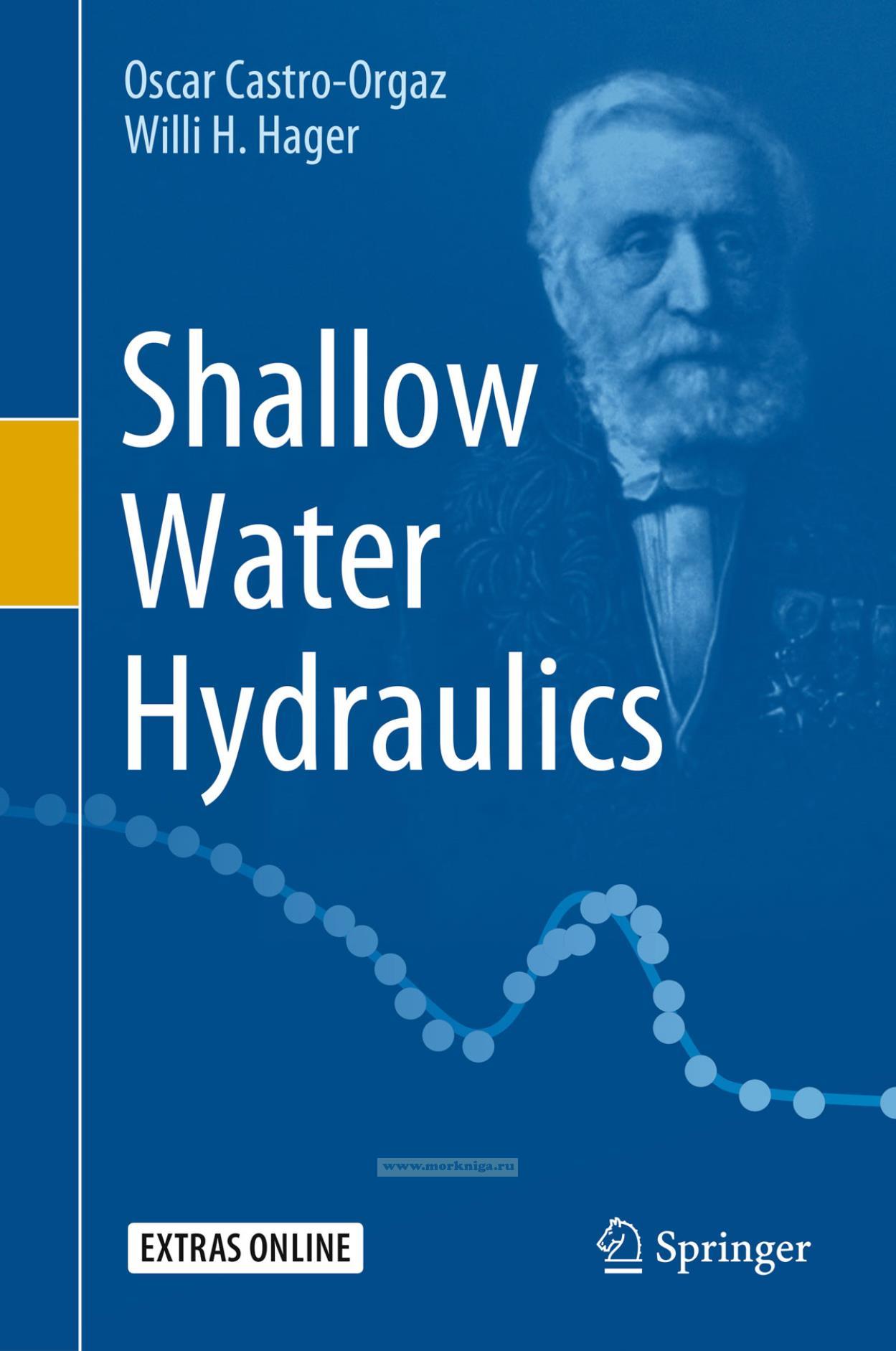Shallow Water Hydraulics/Гидравлика в условиях мелководья
Книга на английском языке
The purpose of Shallow Water Hydraulics is to present the theory and the computation of open channel flows using analytical, numerical, and experimental results. The book’s target audience includes graduate and undergraduate students as well as practitioners of civil and environmental engineering. The book is conceptually divided into four parts: fundamental equations (Chap. 1), steady open channel flows (Chaps. 2-4), unsteady open channel (flows (Chaps. 5-9), and special topics (Chaps. 10 and 11). As supporting learning material for students, a library of numerical codes is available in Chap. 12. The complexities of theory and numerical methods are progressively increased toward the end of the book, rendering pieces of the material useful for courses of different levels.
Contents
1 Fundamental Equations of Free Surface Flows
1.1 Introduction
1.2 General Depth-Integrated Equations over a 3D Terrain
1.3 Saint-Vanant Theory
1.4 Non-hydrostatic Theory
1.5 Sediment Transport and Movable Beds
References
2 Energy and Momentum Principles
2.1 Introduction
2.2 Energy Principle
2.3 Momentum Principle
2.4 Control Sections
2.5 Application: Numerical Solution of Energy-Momentum
Equations for Gate Flow
References
3 Computation of Steady Gradually-Varied Flows
3.1 Introduction
3.2 Governing Equation of Non-uniform Flow
3.3 Uniform Flow
3.4 Flow Profiles in Prismatic Channels
3.5 Computation of Steady Flow Profiles
3.6 Applications
3.7 Compound Channels
References
4 Computation of Steady Transcritical Open Channel Flows
4.1 Introduction
4.2 Transition from Sub- to Supercritical Flow
4.3 Transition from Super- to Subcritical Flows
4.4 Computational Examples
References
5 Unsteady Open Channel Flows: Basic Solutions
5.1 Introduction
5.2 Shallow Water Equations
5.3 Discontinuous Solutions: Basic Equations of a Positive Surge
5.4 Methods of Solution
5.5 Method of Characteristics
5.6 Simple Wave Problem: Basic Equations of Rarefaction Waves
5.7 Simplified Models: The Kinematic Wave
5.8 Use of Non-conservative Form of SWE
5.9 Limitations of SWE
5.10 Hydrologic Routing
6 Ideal Dam Break Waves
6.1 Introduction
6.2 Dam Break Wave Under Dry Tail water Conditions
6.3 Dam Break Wave Under Wet Tailwater Conditions
6.4 Computational Examples
References
7 Finite Difference Methods
7.1 Introduction
7.2 Basic Numerical Aspects
7.3 Boundary and Initial Conditions
7.4 Explicit Schemes
7.5 Computational Examples
References
8 The Riemann Problem
8.1 Introduction
8.2 Wet-Bed Exact Riemann Solver
8.3 Dry-Bed Exact Riemann Solver
8.4 Application: Gate Maneuvers in Open Channels
References
9 Finite Volume Methods
9.1 Introduction
9.2 Godunov-Type Schemes
9.3 Approximate Riemann Solvers
9.4 Dry-Bed Treatment
9.5 Source Terms
9.6 One-Sided First-Order Upwind Scheme
9.7 MUSCL-Hancock Second-Order TVD Scheme
9.8 Boundary and Initial Conditions
9.9 Computational Examples
References
10 Sediment Transport and Movable Beds
10.1 Introduction
10.2 Flow Equations
10.3 Numerical Scheme
10.4 Test Cases
References
11 Numerical Modeling of Non-hydrostatic Free Surface Flows
11.1 Introduction
11.2 Two-Dimensional Steady Potential Flow
11.3 Unsteady Ideal Fluid Flow
11.4 Unsteady Flow Test Cases
References
12 Numerical Library of Shallow Water Equations
12.1 The Library
12.2 Examples of Codes
12.3 Using the Library
References
Author Index
Subject Index

